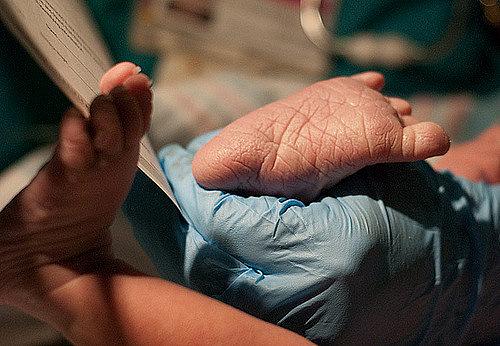Taking health care transparency to the next level

This post was produced for the USC Health Data Accountability Project, a joint initiative of the USC Center for Health Journalism and the Gehr Family Center for Health Systems Science. — Ed.
A new mother stood beaming, bright white teeth outlined with deep red lipstick. Her barrel curls of brown hair hung over her new baby girl. The baby had a pale pink bow in her hair and squealed as she squirmed and kicked to get her mother’s attention. It was a scene of happiness as I walked into the little baby girl’s hospital room at Children’s Hospital Los Angeles. At first I barely noticed the white sling wrapped around the baby’s right arm and up over her shoulder. As I began to speak with the mother, her smile started to disappear, and a more somber expression emerged. The baby girl was born elsewhere, but transferred to the children’s hospital after a major complication during delivery. The baby had experienced shoulder dystocia, which occurs when an infant’s shoulder is caught in the birth canal. For this baby girl, the experience resulted in severe damage to an important nerve structure that directs movement and supports sensation in the arm. When I looked down at the little girl, I noticed that although her legs were kicking, like those of a normal baby, her right arm lay still in its sling.
Could this have been prevented? Typically, this type of complication can be avoided with appropriate obstetrics care and an immediate switch from a natural birth to a caesarean section upon signs of trouble. The baby, my patient, was large for gestational age, which put her at risk for delivery complications such as this one.
Perhaps this family could have been spared this heartache if they had more information in advance about the hospital where she planned to give birth. As it turned out, it was known within the medical community as a “low performer” in obstetrics care, but few Medicaid beneficiaries know such hospital information is available.
In an effort to empower patients to select the best place to receive care, health care leaders and policy makers have increasingly advocated for greater transparency when it comes to quality data on health care providers.
Related stories:
California would benefit from a common yardstick to measure Medicaid performance
State officials show little interest in providing quality of care information for poor
Free the Data: Public accountability sorely needed for Medicaid providers
Massachusetts pioneers making quality a public priority for safety net patients
One of the earliest pushes to promote data transparency was the NY State Registries, which began publicly reporting rates of cardiovascular complications and hospital mortality in the 1990s.
Since then, numerous public and private organizations, ranging from state governments, to commercial insurance companies, to the Centers for Medicare and Medicine (CMS) have developed tools allowing consumers to compare the performance of health care providers. CMS’s Physician Compare and Hospital Compare tools – which display data on factors such as mortality, complications, readmissions, and patient experience for different health care providers – are among the most prominent examples.
In California, maternity outcomes have become one of the next frontiers for greater transparency.
Until recently, information on maternal outcomes was difficult to find and frequently presented in way that would be hard to decipher for the lay public. Then, last February, the California Health Care Foundation and Yelp unveiled a new partnership. It provides California mothers with maternity care quality measures like C-section and breastfeeding rates for hospitals where babies are born. In the future, as the tool becomes increasingly well known, patients like mine may be better equipped to select the best hospital to manage a complicated delivery.
But if that mother returns to her doctor to get follow-up care for her daughter’s injury, she won’t be able to get information on the quality of clinic providers as easily.
That’s because this squirmy talkative baby girl was born to a mother who receives Medicaid (Medi-Cal in California), the program that serves low-income patients.
Medicaid is a taxpayer-funded program, yet neither public officials nor consumers are able to assess the outcomes of their public investment when it comes to provider groups and medical chains in California, along with most other states. That’s because quality scores for Medicaid provider groups are kept under wraps here and elsewhere. Yet the same quality metrics have been collected in California and shared publicly on medical groups for commercially insured patients since 2007.
From a medical ethics point of view, and in the name of honesty and the prevention of medical malfeasance, greater transparency should be provided for all patient populations.
(Editor Note: The California Health Care Foundation, which is mentioned in this post, also helps fund the Center for Health Journalism’s Data Fellowship).
[Photo by jlb_birth-95 via Flickr.]

